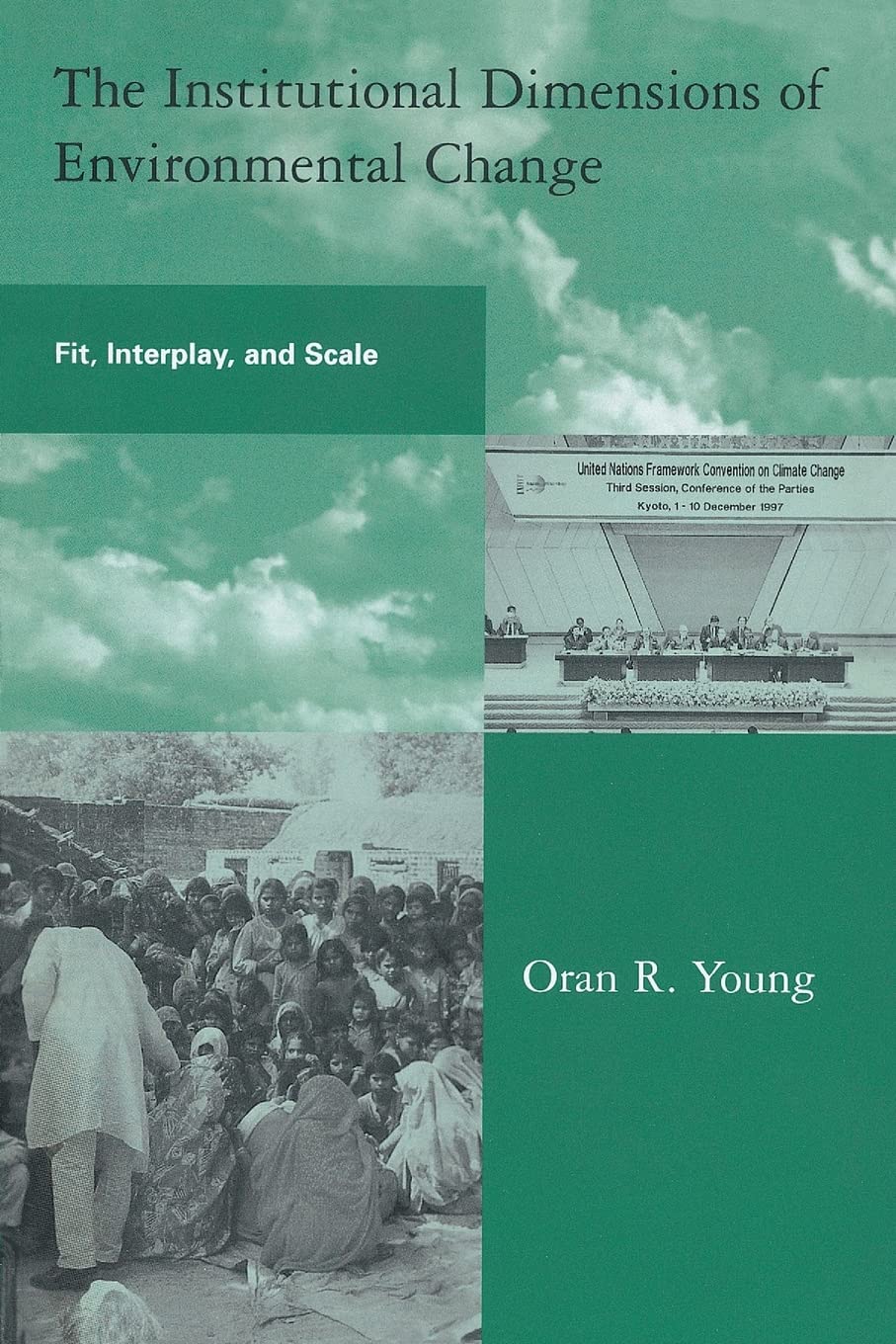
Title

The Institutional Dimensions of Environmental Change: Fit, Interplay, and Scale (Global Environmental Accord: Strategies for Sus,Used
Delivery time: 8-12 business days (International)
Researchers studying the role institutions play in causing and confronting environmental change use a variety of concepts and methods that make it difficult to compare their findings. Seeking to remedy this problem, Oran Young takes the analytic themes identified in the Institutional Dimensions of Global Environmental Change (IDGEC) Science Plan as cuttingedge research concerns and develops them into a common structure for conducting research. He illustrates his arguments with examples of environmental change ranging in scale from the depletion of local fish stocks to the disruption of Earth's climate system.Young not only explores theoretical concerns such as the relative merits of collectiveaction and socialpractice models of institutions but also addresses the IDGECidentified problems of institutional fit, interplay, and scale. He shows how institutions interact both with one another and with the biophysical environment and assesses the extent to which we can apply lessons drawn from the study of local institutions to the study of global institutions and vice versa. He examines how research on institutions can help us to solve global problems of environmental governance. Substantive topics discussed include the institutional dimensions of carbon management, the performance of exclusive economic zones, and the political economy of boreal and tropical forests.
By changing our most important processes and
products, we have already made a big leap forward. This ranges from the
increased use of more sustainable fibers to the use of more
environmentally friendly printing processes to the development of
efficient waste management in our value chain.
⚠️ WARNING (California Proposition 65):
This product may contain chemicals known to the State of California to cause cancer, birth defects, or other reproductive harm.
For more information, please visit www.P65Warnings.ca.gov.
Shipping & Returns
Shipping
We ship your order within 2–3 business days for USA deliveries and 5–8 business days for international shipments. Once your package has been dispatched from our warehouse, you'll receive an email confirmation with a tracking number, allowing you to track the status of your delivery.
Returns
To facilitate a smooth return process, a Return Authorization (RA) Number is required for all returns. Returns without a valid RA number will be declined and may incur additional fees. You can request an RA number within 15 days of the original delivery date. For more details, please refer to our Return & Refund Policy page.
Shipping & Returns
Shipping
We ship your order within 2–3 business days for USA deliveries and 5–8 business days for international shipments. Once your package has been dispatched from our warehouse, you'll receive an email confirmation with a tracking number, allowing you to track the status of your delivery.
Returns
To facilitate a smooth return process, a Return Authorization (RA) Number is required for all returns. Returns without a valid RA number will be declined and may incur additional fees. You can request an RA number within 15 days of the original delivery date. For more details, please refer to our Return & Refund Policy page.
Warranty
We provide a 2-year limited warranty, from the date of purchase for all our products.
If you believe you have received a defective product, or are experiencing any problems with your product, please contact us.
This warranty strictly does not cover damages that arose from negligence, misuse, wear and tear, or not in accordance with product instructions (dropping the product, etc.).
Warranty
We provide a 2-year limited warranty, from the date of purchase for all our products.
If you believe you have received a defective product, or are experiencing any problems with your product, please contact us.
This warranty strictly does not cover damages that arose from negligence, misuse, wear and tear, or not in accordance with product instructions (dropping the product, etc.).
Secure Payment
Your payment information is processed securely. We do not store credit card details nor have access to your credit card information.
We accept payments with :
Visa, MasterCard, American Express, Paypal, Shopify Payments, Shop Pay and more.
Secure Payment
Your payment information is processed securely. We do not store credit card details nor have access to your credit card information.
We accept payments with :
Visa, MasterCard, American Express, Paypal, Shopify Payments, Shop Pay and more.
Related Products
You may also like
Frequently Asked Questions
- Q: What is the main focus of 'The Institutional Dimensions of Environmental Change'? A: The book examines the role of institutions in environmental change, discussing how they contribute to and address such changes through various analytic themes.
- Q: Who is the author of this book? A: The author is Professor Oran R. Young, a recognized expert in environmental governance and institutional analysis.
- Q: What are some key topics covered in the book? A: Key topics include institutional fit, interplay, scale, carbon management, exclusive economic zones, and the political economy of boreal and tropical forests.
- Q: What is the publication date of this book? A: The book was published on May 1, 2002.
- Q: How many pages does the book have? A: The book contains 238 pages.
- Q: What edition of the book is available? A: This is the First Edition of 'The Institutional Dimensions of Environmental Change'.
- Q: In what format is the book available? A: The book is available in paperback format.
- Q: What condition is the book in? A: The book is listed as 'New'.
- Q: What is the target audience for this book? A: The book is aimed at researchers and students interested in environmental studies, governance, and institutional analysis.
- Q: Does the book provide practical examples of environmental change? A: Yes, the author illustrates theoretical arguments with practical examples, such as local fish stock depletion and global climate system disruptions.
